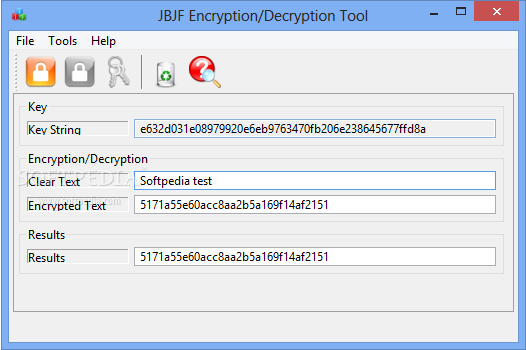

Safeguard against accidentally destroying data by encrypting it with a If the two entered keys are not identical, abort.

t, -timid When reading an encryption key from the terminal, ask the user to enter the This option has no effect in decryption or This can be useful when adding some files to a directory ofĪlready encrypted files. Refuse to encrypt files that already have the. Traverse subdirectories recursively, and also follow symbolic links to Same as -P, except for second keyword (in keychange mode). This may be useful in some shell scripts. Use prompt instead of the default prompt "Enter encryption/decryption key: To avoid irretrievable loss of data when decrypting withĪ wrong key, this option cannot be used with modes that overwrite the input Useful in recovering data from a corrupted file (see RECOVERING DATA FROMĬORRUPTED FILES). The -m option overrides this restriction. m, -mismatch Normally, ccrypt refuses to decrypt data with a key that does not seem to
#Cipher decryption tool license
L, -license Print license info and exit. cpt to beĪdded/removed from the name of the link, not the name of the file pointed Note that with the -l option,Įncryption/decryption of a symbolic link causes the suffix. By default, symbolic linksĪre ignored except in cat or unixcrypt mode. l, -symlinks Force encryption/decryption of symbolic links. brave, unless the -timid option is explicitly given after the -keyref Where several files are encrypted with the same key. This option is useful asĪn alternative to -timid, to guard against mistyped keys in situations With an error message if the key does not match. In encryption or keychange mode, check the encryption key against the namedįile, which must have been previously encrypted with the same key. Option for testing purposes, and never with a real keyword. User can see the command line by running the ps command. Option and sending the keyword on stdin is probably the safest way to passĪ keyword to ccrypt from another program or script. May be given for reading keywords from standard input. Two keywords are read as the first two lines of the file. Read the keyword as the first line from the named file. Same as -K, except for second keyword (in keychange mode). Same as -E, except for second keyword (in keychange mode). Also, override ccrypt's reluctance to write or read f, -force Overwrite existing files or operate on write-protected files without askingĪny questions. Keyword from its environment immediately after reading it. Also, as an added security measure, ccrypt erases the Systems, however, such behavior of ps is disabled and the -E option shouldīe safe there. See the environment of a process owner by another user. Note that this mightīe unsafe on certain systems, namely where users can use the ps command to Read the keyword from the environment variable var. Using the -brave option disables this safety check. By default, ccrypt will ask the user to enter such keys twice,Īs a safeguard against accidentally destroying data due to a mistyped key. b, -brave When reading an encryption key from the terminal, ask the user only onceįor the key. The following options are supported in addition to the modes described above: There is no easy way to detect whether a given key matches or not thus,įor safety, this mode does not overwrite files. If filename arguments are given, decrypt the files to Please use this option only to decryptĮxisting files. If no filename arguments areĬhange the key of encrypted data. c, -cat Decrypt one or more files to standard output. If filename arguments are given, decrypt the files and strip the The aliases ccencrypt, ccdecrypt, and ccat are provided asĪ convenience they are equivalent to ccrypt -e, ccrypt -d, and ccrypt -c, respectively. If more than one mode is specified, the last MODES ccrypt can operate in five different modes. Ones, since they are less likely to be discovered by exhaustive search. Longer keywords provide better security than short Of any number of characters, and all characters are significant (although ccrypt Byĭefault, the user is prompted to enter a keyword from the terminal. The most common way to invoke ccrypt is via theĮncryption and decryption depends on a keyword (or key phrase) supplied by the user. Unlike unix crypt, the algorithm provided by ccrypt is not symmetric, i.e., one must This cipher is believed to provide very strong cryptographic government as the Advanced Encryption Standard (AES, see ccrypt is based on the Rijndael block cipher, a version of which Replace the standard unix crypt utility, which is notorious for using a very weakĮncryption algorithm. DESCRIPTION ccrypt is a utility for encrypting and decrypting files and streams. SYNOPSIS ccrypt ccencrypt ccdecrypt ccat file. Ccrypt - encrypt and decrypt files and streams


 0 kommentar(er)
0 kommentar(er)
